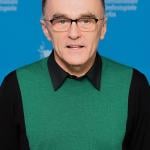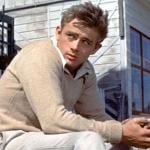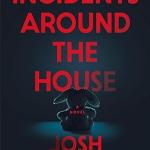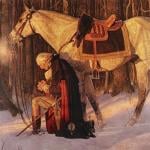
The wife and I have been talking about doing a Lord of the Rings extended-edition marathon for so long, it’s kind of hard to believe we’ve actually done it now. But yesterday, do it, we did.
Our apartment isn’t very big, so we only had about half-a-dozen friends and family over for the occasion. But it was fun nonetheless. To make things even more interesting, my wife served up food before each and every disc — each batch named for one of the hobbit meals, though, y’know, we didn’t bother to check beforehand and see what the hobbits actually eat or anything. “Just good plain cooking,” says my wife, “and lots of it.” And that seems like a suitably Hobbit-ish approach to take. It’s the spirit of the cookbook, not the letter of the cookbook, that counts!
So, we started with an amalgamated “first and second breakfast” (scrambled eggs, hashed browns, cinnamon bread, butter), and we proceeded from there through “elevenses” (mango, pineapple, strawberries, three kinds of whipped cream: plain, amaretto, chocolate & triple sec), “luncheon” (sandwich ingredients: smoked salmon, oregano bread, cucumbers, green peppers, mushrooms, three kinds of cheese: feta, mozzarella, marble), “tea” (key lime pie, chocolate cake, spice cake, whipped cream redux), “dinner” (breaded chicken or fish, chips) and “supper” (luncheon redux).
Needless to say, we were all pretty stuffed by the time we got to the fourth or fifth disc!
As for the films themselves, I have to say I was more impressed than I had ever been before with how the trilogy holds together as a single story (even if there are a few minor discontinuities, like the way Sauron’s “eye” changes with each film). I had seen the entire trilogy in one sitting before, back when they showed the extended versions of the first two films and the shorter version of the third film the day before The Return of the King premiered in theatres. On that occasion, I had already seen The Return of the King at a press screening just a week or two earlier, and I was struck by how puny The Fellowship of the Ring now seemed. But on this occasion, watching the films months after my last exposure to any of them, I was struck by the way Fellowship starts small and draws us in, and I was continually drawn in, deeper and deeper, as the story kept getting bigger and bigger.
And as one who recently finished writing about the newest Star Wars movie, I was also impressed, once again, by the notes of awe and grace that are abundant throughout Peter Jackson’s films yet sorely lacking in George Lucas’s latest trilogy. And I had fond memories of how new and exciting Jackson’s special effects and sweeping camera movements once seemed, before all those other ancient-combat war epics tried to copy his success.
Speaking of George Lucas and all that, one friend who attended the event was an 11-year-old girl who remembered seeing The Fellowship of the Ring on the big screen when she was 7. That was about the age I was when I saw the original Star Wars for the first time. So of course I had to tell her it might be interesting to see how Jackson’s film looks to her in 20 or 30 years.
FWIW, I remain convinced that The Two Towers is the weakest of the three films, though it has several of the trilogy’s best moments (the opening fight between Gandalf and the Balrog, the great closing shot of the Nazgul soaring over Mordor, some of Gollum’s more character-intensive scenes, etc.). I can understand the reasons behind many of the changes that were made to the characters and situations, but these changes do result in a number of gaping plot holes which, as Tolkien might put it, disrupt the storyteller’s efforts to “create belief” and thus require the viewer to “condescend” to the film by “suspending disbelief”.
But which film do I think is the strongest? That is a more vexing question.
Fellowship has some of the most charming and interesting character development, and its focus is solidly on the hobbits and wizards; the later films tend to be more obsessed with human beings, which is unfortunate because, quite frankly, many of the humans aren’t all that interesting. (And of course, the most interesting human of all, i.e. Boromir, is killed at the end of the first film.) But Fellowship also has the choppier plot structure; while it is the most linear of the three films, its very linearity emphasizes its episodic nature — a fact that is most pronounced during the Lothlorien sequence, which is a bit of a drag and which serves mainly as a buffer between Gandalf’s death and Boromir’s betrayal. The later films, OTOH, weave their parallel storylines together in a way that obscures the lines between episodes.
For its part, The Return of the King has the grandest effects and delivers a wonderfully epic payoff to all the portents of the previous films; but it is so, so busy with the payoff that it lacks the easygoing charm — or even the personal rivalry — of the first film. Plus, it runs into awkward structural problems of its own; after treating the siege of Minas Tirith as a climactic battle not unlike the battle for Helm’s Deep in the previous film, it must then carry on to show how yet another battle is waged while the real story takes place elsewhere. This problem is especially pronounced in the extended DVD, I think, because while the breaks in the middle of Fellowship and The Two Towers come at points where the story has paused to take a breath, the break in the middle of Return comes right in the middle of this mighty battle.
I also find myself thinking that Gandalf the White is a less impressive figure than Gandalf the Grey, despite being the “new, improved” version of the ol’ wizard. We barely see him at all in The Two Towers, and when he finally gets his share of screen time in Return, he is full of doubts and easily subdued by the Witch King and so forth and so on — if there is anything in the third film to match his famous “You shall not pass!” moment with the Balrog in the first two films, then I have apparently forgotten it.
So, I think I’d give the edge to Fellowship. Even though that film does lack Gollum.












